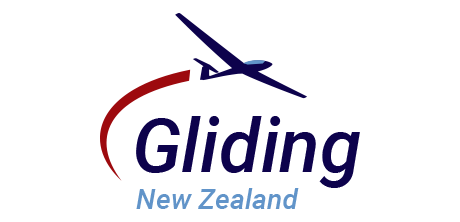About Gliding New Zealand
New Zealand is acknowledged internationally as providing some of the best soaring conditions in the World. Over many years, New Zealand glider pilots have proved themselves, with success in World Championships and many World Records for both speed and distance flights.
There is a strong volunteer ethic within the sport that enables Gliding New Zealand Incorporated (GNZ) and its constituent clubs to continue to operate on minimal budgets. Members enjoy a strong sense of camaraderie and the international badge and awards system provides challenges and incentives for pilots at all levels of experience. The sport has embraced technology and uses modern gliders with advanced aerodynamics and state-of-the art communication and navigation devices. It also preserves its connections with its beginnings, through a strong vintage glider movement.
More than any other aviation pursuit in New Zealand, gliding is a group activity. In a practical sense, no gliding operation can function without a team environment. Even a single flight requires more than one person, to help assemble the glider, to position it in preparation for launch, to drive the winch or fly the tow-plane, and to direct and assist with the launch. In the not uncommon event of the aircraft being landed somewhere other than the home airfield, a crew is needed to retrieve both the glider and the pilot.
There are 22 gliding clubs and one commercial school throughout New Zealand, with a combined flying membership of about 700 pilots and 340 gliders. The gliders represent about 6% of all aircraft registered in New Zealand.
Almost any person can be trained to fly a glider in a safe and efficient manner. Training is provided by qualified instructors. The clubs provide their instructing services free of charge. Naturally, the commercial school charges for its services.
When a trainee has completed the training programme and has demonstrated beyond doubt their ability to pilot a glider in a safe manner they are at liberty to fly gliders as a purely recreational activity. They may choose to remain close to the home airfield or, using favourable air currents, they may fly for several hours, covering distances up to 1000 kilometres or more. That would depend on the weather conditions of the day, and the skill and experience of the pilot.
Flying achievements are recognised by an international series of awards, known as ‘badges’. There are criteria for distance travelled, height gained and duration. These awards are set and administered by the International Gliding Commission of the Fédération Aéronautique Internationale (FAI), based in Lausanne, Switzerland, which is the governing body for all sport aviation activities around the world.
Pilots who have reached an acceptable level of competence can enter contests where flying skill, decision-making ability, and understanding of weather conditions are all used to achieve success. New Zealand annually holds National Championships and three Regional championships in the full range of FAI competition classes. There are also a number of more informal local events.
GLIDING NEW ZEALAND INCORPORATED (GNZ)
Technical administration of gliding as a sport was established in New Zealand with the formation of the NZ Gliding Association (NZGA) in 1947. At that time the Director of Civil Aviation was instrumental in setting up a Technical Committee, being an approved body of six persons, recognised by the Director of Civil Aviation as competent to make decisions on matters pertaining to gliding in New Zealand within the scope of Civil Aviation Regulations and Requirements.
The modern manifestation of this autonomy is CAR Part 149, Aviation Recreation Organisations Certification, which came into being in 1997. The NZGA was renamed Gliding New Zealand (GNZ) in August 2000. GNZ holds a certificate under CAR Part 149 that allows it to conduct flying training courses, conduct competency assessments, authorise glider maintenance, and to administer the associated personnel certification processes – full details are contained in the GNZ Exposition, which can be found in the links near the top of this page Doc Change Alerts.
GNZ has in effect set its own rules and procedures, and monitors and enforces their implementation by its affiliated member clubs and commercial organisations. That this situation has been permitted, and in fact encouraged, by the Civil Aviation Authority over many years, must be seen as an acknowledgement of the professional standards imposed by GNZ.
The governing body of GNZ is the Executive Committee, which handles issues of national importance; provides policy direction; liaises with both Government and non-Government bodies on a national basis; ensures New Zealand is represented in the international arena; sets, promotes, and monitors safe flying and airworthiness practices; and, generally supports and promotes the sport wherever possible.
A number of individual national officers and sub-committees operate more or less autonomously and on a voluntary basis. They report directly to the Executive as appropriate and to the movement as a whole.
GNZ’s Mission Statement is Delivering high quality gliding opportunities to more people.
For more detailed information about GNZ, see the Constitutional Rules, the Code of Conduct and the Strategic Plan, which can be found in the links near the top of this page Doc Change Alerts.
LIFE MEMBERS
Certain people have made very significant contributions to the administration and management of the sport over a very long period. From time to time GNZ recognises such people by electing them to Life Membership. Those so elected at AGMs over the years:
J R (Ralph) Court
G A (Gordon) Hookings
W D (David) Jones
R J (Russell) McDowall
J C (James) Harkness
A B (Bruce) Cunningham
J H (John) Roake
D P (Dennis) Crequer
R G (Robert) Henderson
R J (Roger) Harris
G G (George) Rogers

